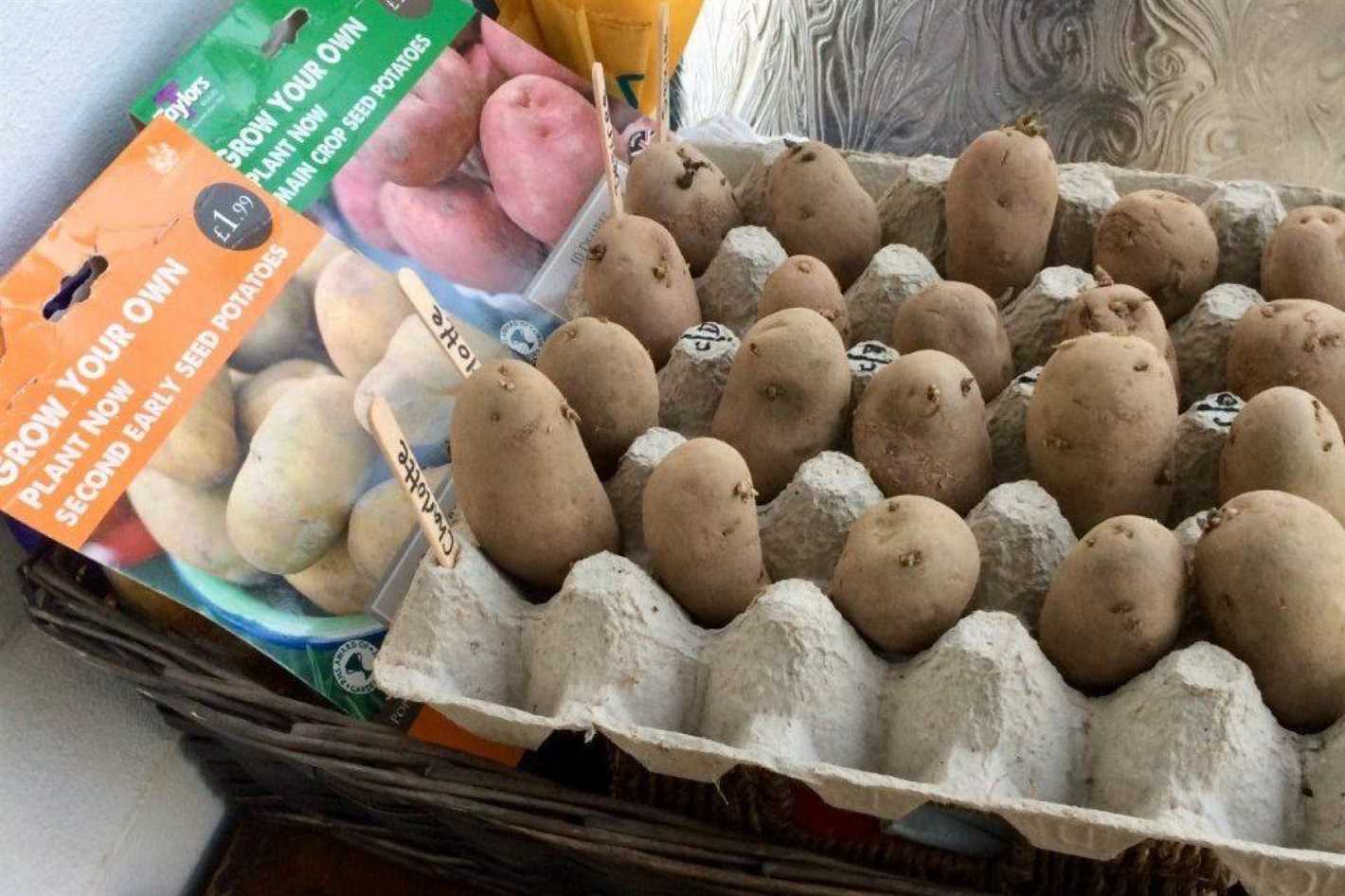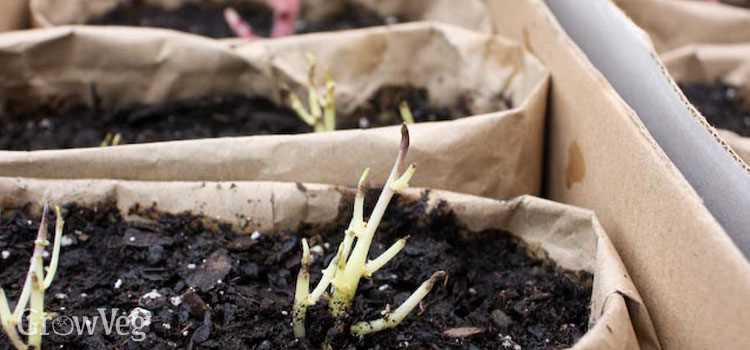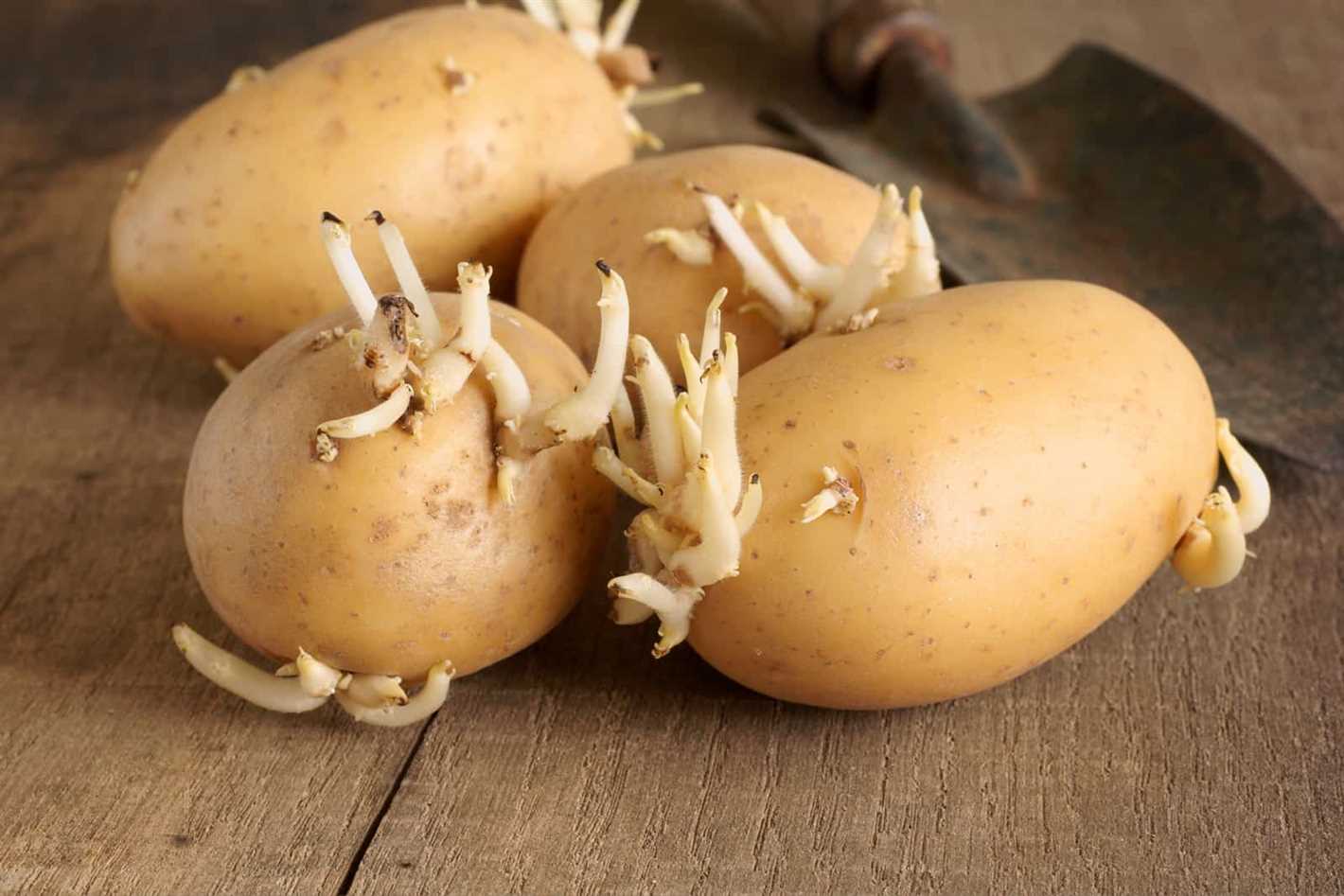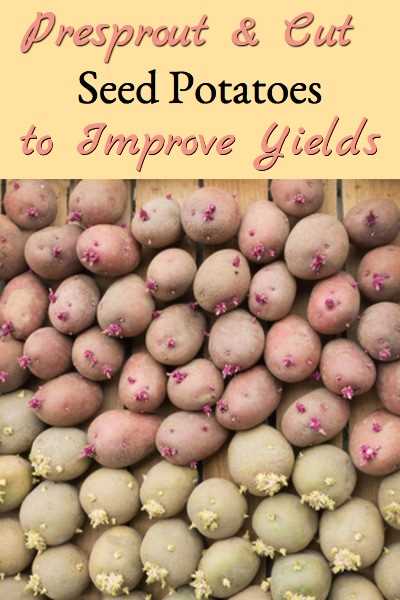- The Importance of Potato Seedling Capping
- 1. Protection from Cold Weather
- 2. Prevention of Sunburn
- 3. Moisture Retention
- 4. Weed Suppression
- 5. Enhanced Root Development
- Reasons to Use the Potato Seedling Capping Technique
- Advantages of Potato Seedling Capping
- How to Prepare the Soil for Potato Seedling Capping
- Step 1: Choose the Right Location
- Step 2: Clear the Area
- Step 3: Loosen the Soil
- Step 4: Amend the Soil
- Step 5: Test the Soil pH
- Step 6: Remove Stones and Debris
- Step 7: Create Raised Beds or Rows
- Step 8: Apply Fertilizer
- Step 9: Water the Soil
- Choosing the Right Potato Varieties for Capping
- 1. Disease Resistance
- 2. Maturity Date
- 3. Yield Potential
- 4. Skin Color and Texture
- 5. Culinary Uses
- Step-by-Step Guide to Potato Seedling Capping
- 1. Prepare the materials
- 2. Plant the potato seedlings
- 3. Water the potato seedlings
- 4. Apply organic fertilizer
- 5. Cover the potato seedlings with capping material
- 6. Secure the capping material
- 7. Monitor and maintain
- 8. Remove the capping material
- 9. Continue to care for the potato plants
- Best Practices for Maintaining Capped Potato Seedlings
- 1. Watering
- 2. Fertilization
- 3. Pest and Disease Control
- 4. Weed Management
- 5. Temperature and Light
- 6. Hardening Off
- 7. Transplantation
- Troubleshooting Common Issues with Potato Seedling Capping
- 1. Poor Adhesion
- 2. Seedling Damage
- 3. Uneven Coverage
- 4. Delayed Emergence
- “Question-Answer”
- What is potato seedling capping?
- What are the benefits of potato seedling capping?
- How does potato seedling capping protect the plants from weather and pests?
- What materials can be used for potato seedling capping?
- When should potato seedling capping be done?
- Are there any disadvantages to potato seedling capping?
- “Video” Things We do To Ensure HUGE Potato Yields
Potato seedling capping is a technique used in the cultivation of potatoes that offers several benefits to growers. Capping involves covering the potato seedlings with a layer of soil, straw, or other organic material to protect them from environmental conditions and promote healthy growth.
One of the main benefits of potato seedling capping is its ability to protect the young plants from extreme temperatures. By covering the seedlings, growers can shield them from frost in the spring or high temperatures in the summer, which can be detrimental to their development. This technique allows the plants to establish strong root systems and prevents stress-induced damage.
In addition to temperature control, capping also helps to conserve moisture in the soil. By covering the seedlings, growers can prevent excessive evaporation and promote better water retention. This is especially important in arid regions or during dry spells, where water conservation is crucial for the health and productivity of the potato plants.
Furthermore, potato seedling capping can help to suppress weed growth. By covering the soil around the seedlings, growers can create a barrier that inhibits the growth of unwanted plants. This reduces competition for nutrients, sunlight, and water, allowing the potato plants to thrive and maximizing their yield.
Overall, potato seedling capping is a valuable technique for potato growers, offering benefits such as temperature control, moisture conservation, and weed suppression. By incorporating this method into their cultivation practices, growers can enhance the health and productivity of their potato crops.
The Importance of Potato Seedling Capping
Potato seedling capping refers to the process of covering the top part of potato seedlings with soil or mulch. While it may seem like a simple step in the potato cultivation process, it plays a crucial role in ensuring the successful growth and development of the plants. Here are some key reasons why potato seedling capping is important:
1. Protection from Cold Weather
By capping potato seedlings, growers provide them with protection against cold weather conditions. When potato plants are exposed to low temperatures, they are at risk of frost damage, which can hinder their growth and development. Capping helps create a microclimate around the seedlings, which acts as an insulator against extreme temperatures, especially during early spring when frost is a concern.
2. Prevention of Sunburn
Another important benefit of capping potato seedlings is the prevention of sunburn. When potato plants are exposed to excessive sunlight, their leaves can become scorched, leading to reduced photosynthesis and overall stunted growth. Capping helps shield the young seedlings from direct sunlight, allowing them to thrive and develop without the risk of sun damage.
3. Moisture Retention
Capping also helps with moisture retention. When potato seedlings are capped, the soil or mulch covering the top layer acts as a barrier, preventing excessive evaporation of moisture from the soil. This ensures that the seedlings have access to a consistent moisture supply, which is vital for their growth and development.
4. Weed Suppression
An additional advantage of potato seedling capping is weed suppression. By covering the top layer of soil around the seedlings, capping helps prevent the growth of weeds, which can compete with the potato plants for nutrients, water, and sunlight. This helps maintain a healthier growing environment for the potato seedlings and reduces the need for manual weeding.
5. Enhanced Root Development
Lastly, capping promotes enhanced root development in potato seedlings. By covering the top portion of the seedlings, the plants are encouraged to grow longer and stronger roots in search of water and nutrients deep within the soil. This ultimately contributes to the overall health and vigor of the potato plants, leading to higher yields.
In conclusion, potato seedling capping is a critical step in potato cultivation that offers several benefits. From protecting against frost and sunburn to retaining moisture and suppressing weeds, capping plays a key role in ensuring the successful growth and development of potato seedlings. It is a technique that every potato grower should consider incorporating into their cultivation practices.
Reasons to Use the Potato Seedling Capping Technique
Using the potato seedling capping technique offers several benefits for potato growers. This technique involves covering the potato plants’ stems with soil or other materials to promote healthy and vigorous growth. Here are some reasons why farmers should consider using this method:
Promotes early tuber formation: Capping the potato seedlings helps stimulate the plants to start producing tubers earlier. By covering the stems, the plants receive more nutrients and support for tuber development. This can lead to a higher yield and an earlier harvest.
Increases yield: The potato seedling capping technique can result in higher potato yields. When the stems are covered, more roots develop along the buried section, which allows the plants to take up more water and nutrients. The increased nutrient absorption contributes to larger, healthier potatoes.
Protects against pest damage: Capping the potato seedlings can provide a physical barrier against pests like wireworms or flea beetles. By burying the stems, the vulnerable parts of the plants are hidden from these pests, reducing the chances of damage to the crops.
Improves drought tolerance: The potato seedling capping technique helps improve the plants’ ability to withstand drought conditions. By covering the stems, the soil retains more moisture, reducing the risk of water stress for the plants. This can be especially beneficial in regions with limited water availability.
Enhances weed control: Capping the potato seedlings can help suppress weed growth around the plants. The layer of soil or other materials acts as a mulch, preventing sunlight from reaching weed seeds and inhibiting their germination. This reduces the competition for nutrients and resources, allowing the potato plants to thrive.
Overall, the potato seedling capping technique is a valuable practice for potato growers. It offers various advantages, including promoting early tuber formation, increasing yield, protecting against pests, improving drought tolerance, and enhancing weed control. By implementing this method, farmers can optimize their potato crop production and achieve healthier, more productive plants.
Advantages of Potato Seedling Capping
Potato seedling capping is a technique used in potato cultivation that offers several advantages over traditional methods. Here are some of the benefits of potato seedling capping:
Improved soil moisture retention: Capping the potato seedlings helps to create a protective layer on the soil surface, preventing excessive evaporation and improving water conservation. This can be particularly beneficial in dry or arid regions where water availability is limited.
Reduced weed competition: By covering the soil with a capping material, such as straw or plastic, potato seedlings experience reduced competition from weeds. This can help to ensure that the seedlings have access to sufficient nutrients and water, promoting their healthy growth.
Enhanced temperature regulation: Capping can help regulate soil temperature by insulating the seedlings from extreme heat or cold. This can be especially important during early spring or late fall when temperatures can fluctuate significantly.
Protection against pests and diseases: Implementing a capping technique provides physical protection to the potato seedlings, acting as a barrier against pests, insects, and certain diseases. This can help reduce the need for chemical pesticides and promote more sustainable farming practices.
Improved yield and quality: All the aforementioned benefits of potato seedling capping ultimately lead to improved yield and quality of the potato crop. By optimizing growing conditions and reducing stress factors, farmers can expect higher yields and better-quality potatoes.
In summary, potato seedling capping offers advantages such as improved soil moisture retention, reduced weed competition, enhanced temperature regulation, protection against pests and diseases, and improved yield and quality of the potato crop. It is a technique worth considering for potato growers looking to optimize their cultivation practices and achieve better results.
How to Prepare the Soil for Potato Seedling Capping

Preparing the soil properly is essential for successful potato seedling capping. Follow these steps to ensure your soil is ready:
Step 1: Choose the Right Location

Find a suitable location for your potato seedlings. The soil should be well-draining and rich in organic matter. Avoid areas that are prone to waterlogging or have compacted soil.
Step 2: Clear the Area

Remove any weeds or vegetation from the area where you’ll be capping your potato seedlings. This will minimize competition for nutrients and space.
Step 3: Loosen the Soil
Use a garden fork or a tiller to loosen the soil in the designated area. This will improve aeration and drainage, allowing the potato seedlings to establish roots more easily.
Step 4: Amend the Soil
If the soil lacks organic matter or essential nutrients, amend it with compost or well-rotted manure. This will improve the soil structure and provide the necessary nutrients for healthy potato growth.
Step 5: Test the Soil pH
Check the pH level of the soil using a pH testing kit. Potatoes prefer a slightly acidic soil with a pH between 5.0 and 6.0. If the soil pH is too high, you can lower it by adding sulfur or peat moss.
Step 6: Remove Stones and Debris
Remove any stones, rocks, or other debris from the soil. These can interfere with root growth and affect the overall health of the potato seedlings.
Step 7: Create Raised Beds or Rows
Consider creating raised beds or rows to improve drainage and ensure the seedlings are well-supported. This can be done by mounding soil or using raised bed frames.
Step 8: Apply Fertilizer
Before planting the potato seedlings, apply a balanced fertilizer according to the manufacturer’s instructions. This will provide the necessary nutrients for vigorous growth.
Step 9: Water the Soil
Moisten the soil thoroughly before planting the potato seedlings. This will help the seedlings establish roots and reduce transplant shock.
Following these steps will help create an optimal growing environment for potato seedlings and increase the success of your capping process.
Choosing the Right Potato Varieties for Capping
Growing potatoes is a popular activity for many gardeners. Not only are potatoes delicious, but they can also be easily grown in a home garden. When it comes to selecting potato varieties for capping, there are several factors to consider. Choosing the right potato varieties can greatly impact the success of your capping efforts. Here are some tips to help you select the best potato varieties for capping:
1. Disease Resistance
One of the most important factors to consider when choosing potato varieties for capping is disease resistance. Different potato varieties have varying levels of resistance to common potato diseases such as late blight, early blight, and scab. It is important to choose varieties that are known to be resistant to these diseases to ensure healthier potato plants and better yields.
2. Maturity Date
The maturity date of a potato variety is another important factor to consider. Some potato varieties mature earlier than others, which can be beneficial for capping. Early-maturing varieties can be harvested sooner, allowing you to start the capping process earlier in the season. Additionally, early-maturing varieties are less susceptible to pests and diseases that tend to become more prevalent later in the growing season.
3. Yield Potential
The yield potential of a potato variety is another factor to consider when selecting varieties for capping. Some potato varieties have higher yield potentials than others, meaning they can provide a larger harvest. Higher-yielding varieties can be beneficial for capping, as they can result in a greater number of seed potatoes for planting in future seasons.
4. Skin Color and Texture
While the color and texture of a potato’s skin may not directly affect its suitability for capping, it can still be an important factor for many gardeners. Some gardeners prefer potatoes with smooth, thin skins, while others prefer potatoes with thicker, rougher skins. Additionally, the color of the skin can vary among potato varieties, ranging from white and yellow to red and purple. Consider your personal preferences and intended use of the potatoes when selecting varieties based on skin color and texture.
5. Culinary Uses
Finally, consider the culinary uses of the potato varieties you are considering for capping. Different varieties have different flavor profiles and characteristics that make them better suited for certain culinary applications. Some varieties are better for baking, while others are better for roasting, mashing, or frying. Consider how you intend to use the potatoes and choose varieties that will best suit your cooking needs.
By considering these factors when selecting potato varieties for capping, you can increase the likelihood of success in your capping efforts. Remember to choose disease-resistant varieties, consider maturity dates and yield potential, and take into account skin color and texture, as well as culinary uses. Happy capping!
Step-by-Step Guide to Potato Seedling Capping

1. Prepare the materials
Gather the necessary materials for potato seedling capping, including:
- Capping material (such as straw or hay)
- Garden scissors
- Watering can or hose
- Organic fertilizer
2. Plant the potato seedlings
Before capping the seedlings, make sure they are properly planted in the ground. Dig holes that are two to three inches deep and place the seedlings into the holes with the sprouted sides facing up.
3. Water the potato seedlings
After planting the seedlings, water them thoroughly to ensure they are well hydrated. Use a watering can or hose to evenly distribute water around the seedlings.
4. Apply organic fertilizer
Apply a suitable organic fertilizer around the base of each seedling. Follow the instructions on the fertilizer packaging for the correct amount to use.
5. Cover the potato seedlings with capping material
Carefully place the capping material (such as straw or hay) around the base of each potato seedling. Make sure to cover the entire stem up to the leaves, leaving no gaps.
6. Secure the capping material
Use garden scissors to trim any excess capping material and tuck it under the layers to secure it in place. This will prevent it from blowing away or being disturbed by pests.
7. Monitor and maintain
Regularly check the capping material to ensure it is still intact and providing adequate coverage for the potato seedlings. Water the seedlings as needed and monitor their growth and health.
8. Remove the capping material
Once the potato seedlings have grown to a desired height, typically around six to eight inches, carefully remove the capping material. This will allow the plants to fully emerge and receive direct sunlight.
9. Continue to care for the potato plants
After removing the capping material, continue to care for the potato plants by watering, fertilizing, and monitoring their progress throughout the growing season. Harvest the potatoes when they reach maturity.
| Step | Description |
|---|---|
| 1 | Prepare the materials |
| 2 | Plant the potato seedlings |
| 3 | Water the potato seedlings |
| 4 | Apply organic fertilizer |
| 5 | Cover the potato seedlings with capping material |
| 6 | Secure the capping material |
| 7 | Monitor and maintain |
| 8 | Remove the capping material |
| 9 | Continue to care for the potato plants |
Best Practices for Maintaining Capped Potato Seedlings
Proper care and maintenance of capped potato seedlings is essential to ensure their healthy growth and successful transplantation. Here are some of the best practices to follow:
1. Watering
- Provide adequate water to keep the soil evenly moist, but not waterlogged.
- Avoid overwatering as it can lead to root rot and other diseases.
- Water the seedlings from the base or use a drip irrigation system to prevent wetting the foliage.
2. Fertilization
- Use a balanced fertilizer to provide essential nutrients to the seedlings.
- Apply the fertilizer according to the manufacturer’s instructions, taking care not to over-fertilize.
- Regularly monitor the nutrient levels in the soil and make adjustments accordingly.
3. Pest and Disease Control

- Monitor the seedlings regularly for any signs of pests or diseases.
- Take appropriate measures for pest control, such as using insecticides or biocontrol methods.
- Practice crop rotation and sanitation to prevent the buildup of pests and diseases in the soil.
4. Weed Management
- Keep the area around the seedlings free from weeds.
- Regularly remove any weeds that compete for nutrients and water with the seedlings.
- Consider using mulch to suppress weed growth and conserve soil moisture.
5. Temperature and Light
- Provide the seedlings with the optimal temperature and light conditions required for their growth.
- Keep the seedlings in a well-ventilated area with sufficient sunlight or artificial light.
- Avoid exposing the seedlings to extreme temperatures or direct sunlight, which can cause stress.
6. Hardening Off
- Gradually acclimate the seedlings to outdoor conditions before transplantation.
- Expose them to outdoor temperatures and sunlight for increasing periods each day.
- Protect the seedlings from strong winds and cold temperatures during the hardening off process.
7. Transplantation
- Choose a well-prepared planting site with fertile soil and good drainage.
- Ensure the correct spacing between the seedlings to allow for proper growth.
- Dig a hole slightly larger than the root ball of the seedlings and gently place them in the hole.
- Water the transplanted seedlings thoroughly and continue to provide care as needed.
By following these best practices, you can maximize the growth and yield of your capped potato seedlings, leading to a successful harvest.
Troubleshooting Common Issues with Potato Seedling Capping
Potato seedling capping can be a challenging process, and growers often encounter several common issues. Understanding these issues and their solutions can help ensure successful capping and healthy potato crops. Here are some common problems and troubleshooting tips:
1. Poor Adhesion
One common issue with potato seedling capping is poor adhesion between the capping material and the seedling. This can result in the capping material not sticking to the seedling or falling off easily. To troubleshoot this issue, consider the following:
- Ensure that the seedlings are adequately moist before capping. Dry seedlings may have difficulty adhering to the capping material.
- Review the capping material application technique. Properly applying the capping material and pressing it firmly against the seedling can improve adhesion.
- Choose a capping material with good adhesive properties. Some materials may adhere better to the seedling surface than others.
2. Seedling Damage
During the capping process, seedlings may get damaged, leading to stunted growth or even death. To troubleshoot this issue, consider the following:
- Review the capping technique. Ensure that the capping material is applied gently to prevent damaging the delicate seedlings.
- Check the tools being used for capping. Sharp or rough tools can easily damage the seedlings. Consider using smooth and blunt tools for better seedling protection.
- Inspect the seedlings before capping. Remove any weak or damaged seedlings beforehand to avoid further damage during the capping process.
3. Uneven Coverage
Uneven coverage of the capping material can lead to inadequate protection for the seedlings. This can result in uneven growth and increased vulnerability to pests and diseases. To troubleshoot this issue, consider the following:
- Ensure that the capping material is evenly distributed over the seedlings. Avoid piling up or leaving gaps in the capping material.
- Review the capping technique. Make sure to cover all sides of the seedlings, including the top and roots, for complete coverage.
- Consider using a capping material with better spreading properties. Some materials may naturally spread more evenly, providing better coverage.
4. Delayed Emergence
Delayed emergence of the potato seedlings can be a sign of poor capping or other underlying issues. To troubleshoot this issue, consider the following:
- Review the capping material and technique. Ensure that the capping material is not too thick or compacted, as this can hinder the emergence of the seedlings.
- Check the moisture levels. Excessive moisture can cause the capping material to become too dense, preventing the seedlings from emerging.
- Inspect the seedlings for any signs of disease or pest infestation. Address these issues promptly, as they can affect the emergence and overall health of the seedlings.
By understanding and troubleshooting common issues with potato seedling capping, growers can improve their capping techniques and enhance the success of their potato crops. Regular monitoring and adjustment of the capping process can help ensure optimal conditions for seedling development.
“Question-Answer”
What is potato seedling capping?
Potato seedling capping is a technique used to promote better growth and development of potato plants by covering the seedlings with soil or other materials.
What are the benefits of potato seedling capping?
Potato seedling capping offers several benefits, including protection of young plants from weather and pests, prevention of excessive evaporation, promotion of stronger root development, and improvement of overall plant health and yield.
How does potato seedling capping protect the plants from weather and pests?
By covering the seedlings with soil or other materials, potato seedling capping creates a barrier that shields the plants from harsh weather conditions, such as strong winds, heavy rain, or frost. It also acts as a deterrent to pests, preventing them from damaging or feeding on the young plants.
What materials can be used for potato seedling capping?
A variety of materials can be used for potato seedling capping, including soil, straw, grass clippings, compost, or even plastic mulch. The choice of material depends on factors such as availability, cost, and specific needs of the plants.
When should potato seedling capping be done?
Potato seedling capping should be done shortly after the seedlings emerge from the soil. This is typically when the seedlings are around 4-6 inches tall. It is important to do the capping before the plants become too large or established, as it may cause damage or hinder their growth.
Are there any disadvantages to potato seedling capping?
While potato seedling capping can provide numerous benefits, there are also some potential disadvantages to consider. These include increased risk of disease or fungal infection, difficulty in accessing the plants for maintenance or inspection, and the need for additional labor and resources to implement the capping technique.







